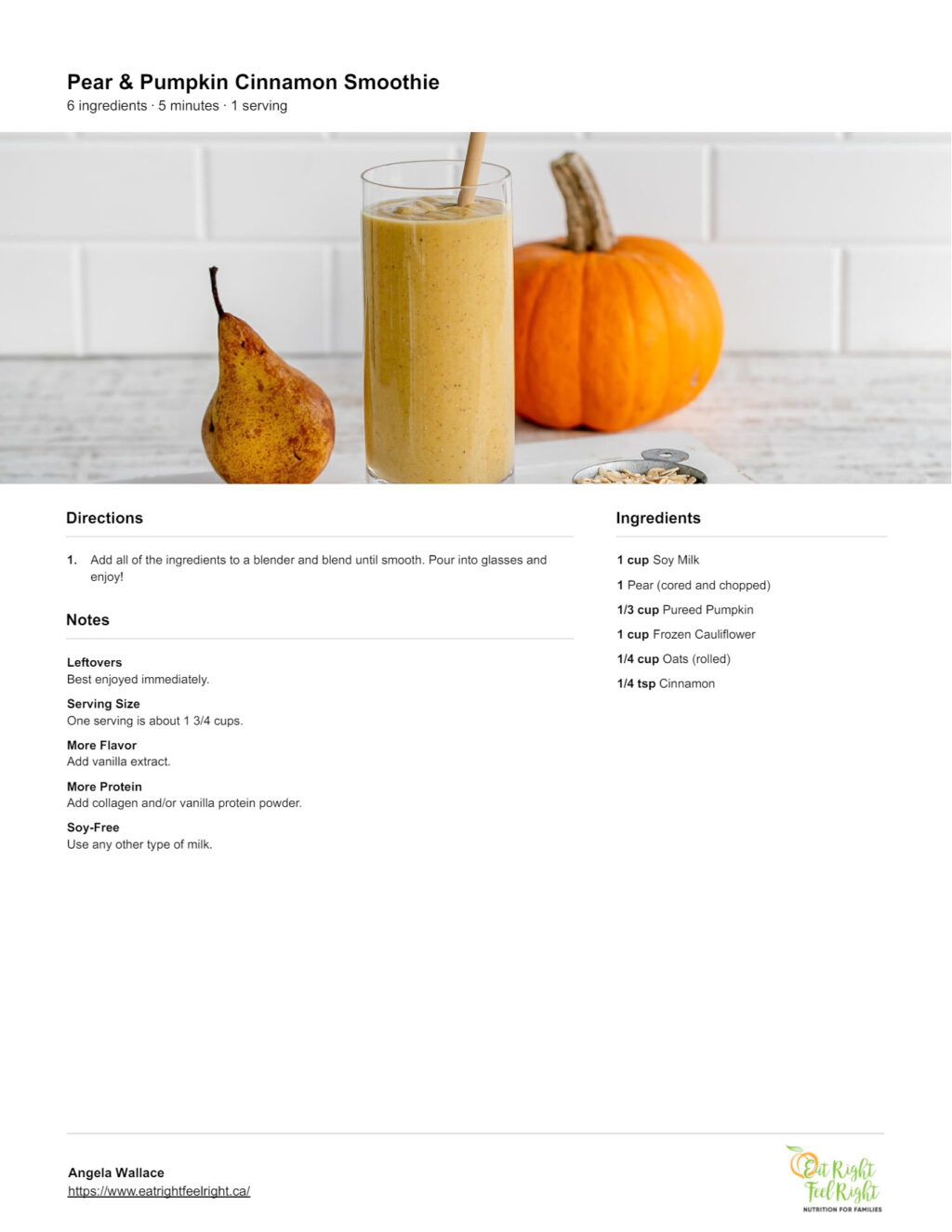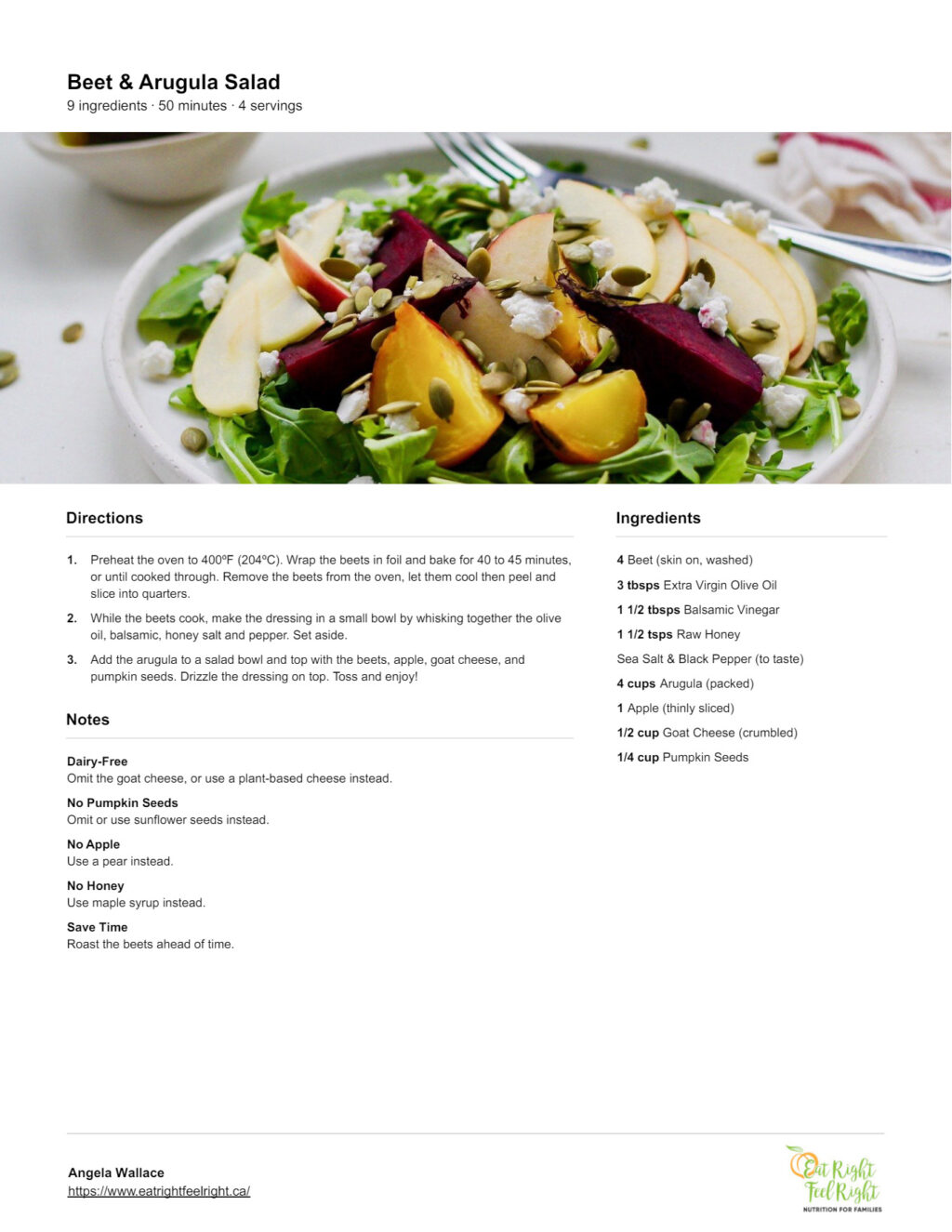3 Reasons to Choose Seasonal Food This Fall

Seasonal eating means to consume foods around the same time they are naturally grown and harvested. In Canada, the types of foods in season will vary monthly, but you might be surprised to know that we have quite the abundance of produce available over the fall months and even into the winter.
Below are three reasons you should try to eat seasonally this fall.
- Nutritional quality of foods (taste and nutrient optimization)
When you eat foods in season, especially fruits and vegetables, you are eating foods at their peak nutrient quality. Fruits and vegetables should be picked when ripe (this means more vitamins and minerals per bite). In fact, when foods are not in season, they are often picked early and must travel (often across the world) to get in your grocery cart. These foods are picked way before their peak ripeness and will continue to ripen as they travel and await selection in the grocery store. This also means that they haven’t peaked in nutrient quality.
Fun fact: Frozen fruits and veggies are a smart choice. They are great when flash frozen because they are harvested at their peak readiness and frozen quickly afterwards. This helps to preserve their nutrient quality. Over the winter months, when less veggies and fruits are in season, like many dark leafy greens or berries, frozen is an excellent option!
- Support for local farmers
When choosing to eat seasonally, you support local farmers, markets, and your local economy. The more seasonally we eat the more potential we create for local farmers and more sustainable eating patterns. Eating seasonally not only supports the local economy but also saves you money. When foods are in season it means they are naturally grown, harvested, and sold locally, allowing for cheaper prices since the food is not travelling far to get to your plate.
- Environmental footprint
As I have mentioned above, food often travels quite far to make it to our plate. The more we can eat seasonally the less food has to travel to get to your plate; this majorly reduces emissions. Other than saving on gas emissions from travel, seasonal food often requires less support from things like pesticides, or other genetic modifications as they are foods that can naturally grow and thrive in our environment. Less use of genetic modifications and harsh pesticides leads to less environmental pollution.
If you are looking to eat seasonally more often, below are a few ways you can get started:
- Learn which fruits and vegetables are seasonal to where you live. Below is a list of some of the vegetables and fruits that are in season across Canada between October and January.
- Check for seasonal produce in your local grocery stores. Foods that are grown in your area will be labelled as being produced in a specific province of Canada. Choose more items that are produced in Canada or in your province, city, or town.
- Consider joining a local farm share (CSA) or check out local farmer’s markets this fall, meet some new people, and enjoy some nutritious and tasty fruits and vegetables.
- If you already enjoy eating seasonally, try some preserving techniques. Here in Canada, our best months for seasonal produce happen to be over the summer, but we can preserve things like tomatoes, berries, and herbs to enjoy over the long winter months. Preserving involves canning, freezing, dehydrating, etc.
Seasonal produce (October-January):
- Cranberries
- Pears
- Greenhouse strawberries
- Bok choy
- Beets
- Cabbage
- Carrots
- Brussels sprouts
- Chinese broccoli
- Greenhouse cucumber
- Garlic
- Kale (fun fact: certain types of kale grow well in the colder weather)
- Napa cabbage
- Onions
- Parsnips
- Pumpkin
- Rutabaga
- Squashes
Check out my two recipes below for some ideas on how to use seasonal produce this fall, something sweet and something savory!



